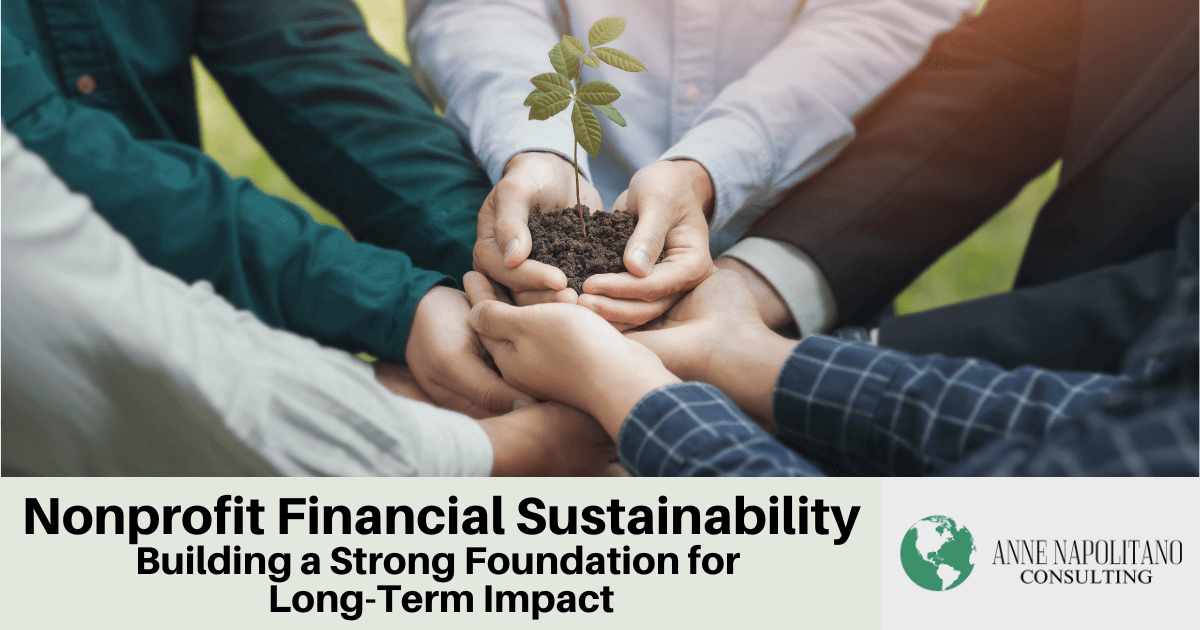
In the world of nonprofit organizations, the pursuit of a worthy mission often goes hand in hand with the challenge of financial sustainability. In this article, we’ll delve into the key components of nonprofit financial sustainability, offering insights and strategies to ensure your organization’s lasting success.
While the heart of a nonprofit beats with its mission, the engine that keeps it running is its financial health. Achieving and maintaining financial sustainability is not just a goal; it’s a necessity. Financial sustainability means more than just balancing the books; it’s about creating a solid foundation that empowers your nonprofit to weather challenges and continue making a lasting impact.
Understanding Nonprofit Financial Sustainability
Financial sustainability is the ability of a nonprofit organization to generate and manage resources effectively over the long term, enabling it to fulfill its mission without compromising its future. The concept goes beyond relying solely on grants and donations; it involves creating diversified revenue streams, building reserves, and implementing robust financial controls.
Diversifying Revenue Streams: Beyond Grants and Donations
Overreliance on a single funding source, such as grants or donations, can leave your nonprofit vulnerable to shifts in the funding landscape. Diversifying revenue streams is a key strategy for financial sustainability. While grants and donations remain essential, consider exploring alternative avenues for generating income such as:
- Earned Income Ventures: Many successful nonprofits have established ventures that generate revenue while supporting their mission. These could range from merchandise sales to training programs or service offerings that align with your organization’s purpose.
- Membership Programs: Creating membership tiers that offer exclusive benefits to supporters in exchange for a recurring fee can provide a stable income source and foster a sense of community among your supporters.
- Social Enterprises: Developing social enterprises where profits are reinvested into your mission can create a self-sustaining cycle of funding. Think of coffee shops, artisanal products, or workshops that align with your organization’s values.
By generating income from various sources, your organization becomes less susceptible to sudden funding changes.
Building Reserves: A Buffer Against Uncertainty
Just as individuals create emergency funds, nonprofits must build reserves. Reserves act as a financial cushion during challenging times or unexpected expenses, allowing your organization to continue operations without disruption. While it might be tempting to funnel every available dollar directly into programs, establishing reserves is a proactive step toward long-term sustainability.
Here are two key factors in building a reserve for your nonprofit:
- Define Reserve Goals: Determine what constitutes a healthy reserve based on your organization’s annual budget and expenses. A common guideline is to maintain three to six months’ worth of operating expenses in reserves.
- Contribute Regularly: Allocate a portion of your revenue specifically to build and maintain your reserves. Regular contributions, even if modest, can accumulate over time, providing a safety net when needed.
Strengthening Financial Controls: Guarding Your Resources
Financial sustainability goes hand in hand with robust financial controls. A solid financial control framework minimizes the risk of financial mismanagement and protects your nonprofit’s valuable resources. These controls not only safeguard your organization’s financial integrity but also foster accountability and transparency—qualities that resonate with donors, supporters, and stakeholders.
- Implement Clear Policies: Establish comprehensive financial policies and procedures. This includes guidelines for spending, reimbursement, procurement, and any other financial transactions within your organization.
- Regular Audits: Conduct regular financial audits to ensure that your financial operations are in compliance with regulations and internal policies. Audits also identify potential areas for improvement.
- Transparent Reporting: Provide clear and accessible financial reports to your board, donors, and supporters. Transparent reporting builds trust and allows stakeholders to understand your organization’s financial health.
Long-Term Planning: Mapping Your Financial Future
Financial sustainability requires a proactive approach. Develop a comprehensive long-term financial plan that aligns with your organization’s goals. This plan should encompass revenue projections, expense management strategies, and risk assessment. Regularly review and update your plan to adapt to changing circumstances and seize new opportunities.
Partners in Your Success
Achieving nonprofit financial sustainability is not a single step; it’s a journey. By diversifying revenue streams, creating reserves, establishing strong financial controls, and creating a proactive plan, your organization can build a solid foundation for long-term success. Gaining financial sustainability doesn’t just benefit your organization; it empowers you to continue making a positive impact on the world.
At Anne Napolitano Consulting, we are committed to providing tailored financial guidance and accounting for nonprofit organizations. If you’re ready to embark on the path to financial sustainability, schedule a free consultation with our team. Together, let’s navigate the challenges and opportunities that lie ahead for your organization. We want to be partners in your success.
